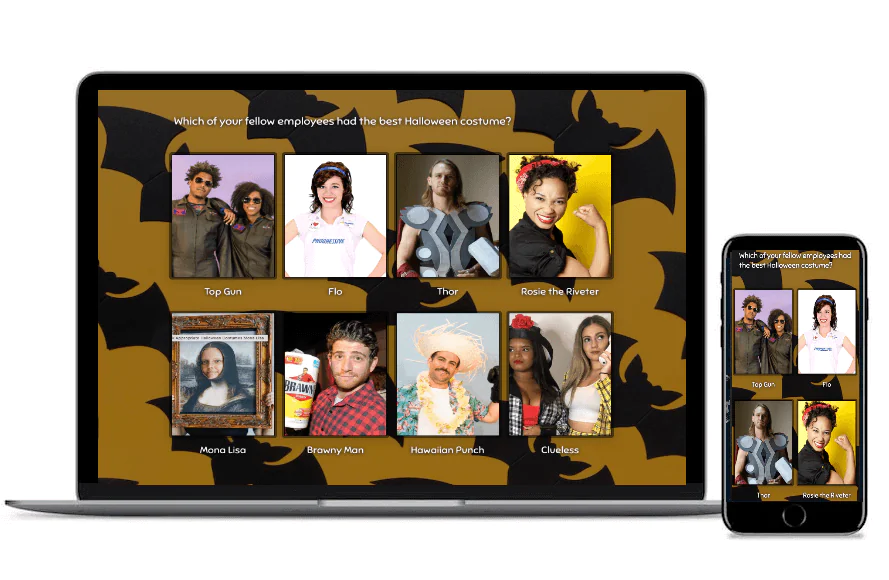Create your survey, poll, or questionnaire now!
What is Research Design?
The official research design definition from the American Psychological Association’s dictionary is, “a strategic plan of the procedures to be followed during a study in order to reach valid conclusions, with particular consideration given to participant selection and assignment to conditions, data collection, and data analysis.” The design phase of any survey determines which tools to use and how to use them. When setting out to conduct research, the problem or challenge an organization is facing will inform the research design, not the other way around.12 Key Elements of Survey Research Design
An impactful research design involves twelve critical elements. So, by addressing these elements in advance, researchers can set their surveys up for success.1. Statement of Purpose
This assures everyone involved in the study is on the same page regarding the survey’s intent.2. Implementation Techniques
This could mean whether the survey will be conducted by phone, in-person, online, or other types of survey methods.3. Demographics
Who are we looking to survey? The general population, or a specific market segment (age, race, marital status, income, education, etc.)4. Question Neutrality
When creating a survey, researchers must make assumptions about the data they expect to collect. However, questions must be formed in a manner that keeps them neutral as not to introduce survey bias into the research.5. Types of Survey Questions
Will questions be open-ended, multiple-choice, Likert-scale? Because there are many ways to pose questions on a survey, researchers will want to decide this upfront. Of course, using multiple types of questions is also an option.6. Possible Participant Objections
Why might someone resist participating in the study or survey? By identifying the potential reasons in advance, researchers can quash them early on.7. Environmental Settings
This refers to where the study will be conducted physically and socially, for example, in a controlled environment (such as a lab or focus group room) or on the street.8. Timeline for Completion
How long will the study last? For example, will it be a quick cross-sectional research design survey, or an ongoing longitudinal study?9. Validity of Results
Determining how researchers will ensure minimum levels of survey bias in the data collection method to improve both the internal and the external validity of the research.10. Reliability of Results
When research is conducted regularly, researchers begin to expect similar results every time. So, research design should indicate how to form research questions to ensure the standard of results.11. Security Concerns
This looks at how researchers will protect participants’ responses and is often determined by the survey implementation technique.12. Analysis and Measurement
What types of data analysis techniques will be employed? And, how will you measure and report results?Qualitative and Quantitative Research Design
Before you begin your survey creation, you need to choose which research design model to implement. Like research itself, the design of your study is generally qualitative or quantitative. Qualitative data gives you information about the qualities of a product or an experience. The data doesn’t have any structure, or just some structure. Qualitative research design, then, is investigative and often open to interpretation unless further research is done. For example, researchers generate most qualitative data through:- Texts and documents
- Audio and video recordings
- Interview transcripts and focus groups
- Observations and notes
- Tests
- Experiments
- Surveys
- Market reports
- Metrics
5 Categories of Qualitative and Quantitative Research Design
After you’ve chosen to do qualitative or quantitative research, you can break it down further into one of five categories.1. Descriptive Research Design
As its name implies, here a researcher is simply interested in describing the situation or case as it applies to their study. Researchers follow a theory when collecting, analyzing, and presenting data. In doing so, they gain insights into the why and how of research. Descriptive design helps others better understand the need for the research.2. Explanatory Research Design
Unlike descriptive research, which aims to describe a topic, explanatory research aims to explain. So, it asks why people behave or believe in the way that they do, or why a particular phenomenon works the way it does, with no need for hypothesis formulation. It is generally conducted to gain information on a topic that was not well researched in the past. It starts with a general idea that leads to subjects for future exploration.3. Diagnostic Research Design
This method is similar to a descriptive study and uses a hypothesis to guide the research. However, its aim is to discover what is happening, why it’s happening, and what to do about it. Researchers also refer to this as the inception of the issue, diagnosis of the issue, and solution for the issue.4. Experimental Research Design
This design method establishes a relationship between the cause and effect of a situation. Since its observational in nature, this research design method looks at the impact caused by the independent variable on the dependent variable. For example, an experimental research design example would be surveying customers about the price of an item (the independent variable) and its impact on their satisfaction with the product (the dependent variable). In order to learn more, researchers can simply manipulate the variables to see how that changes the outcome.5. Correlational Research Design
This is a non-experimental research technique that allows researchers to establish relationships between two closely connected variables. Therefore, it investigates relationships between these variables without the researcher controlling or manipulating any of them. A correlation reflects the strength of the relationship which may be either positive or negative.Conclusion
The creation of any survey should begin with solid research design. In doing so, the framework will guide how you go about conducting the survey, formulating your questions, analyzing the data, and much more. Once you’ve got your research design complete, check out SurveyLegend. With SurveyLegend, online surveys render beautifully, are highly secure, and it’s free to start. Do you typically begin your studies with research design, or are you here to learn more about it? Let us know in the comments, we’d love your feedback.Create your survey, poll, or questionnaire now!
Frequently Asked Questions (FAQs)
Research design is a strategic plan researchers create before conducting a study or survey. When planning, there are 12 key elements: Statement of purpose; implementation techniques; demographics; question neutrality; type of survey questions; possible participant objections; environmental settings; timeline for completion; validity of results; reliability of results; addressing security concerns; and analysis and measurement.




